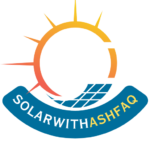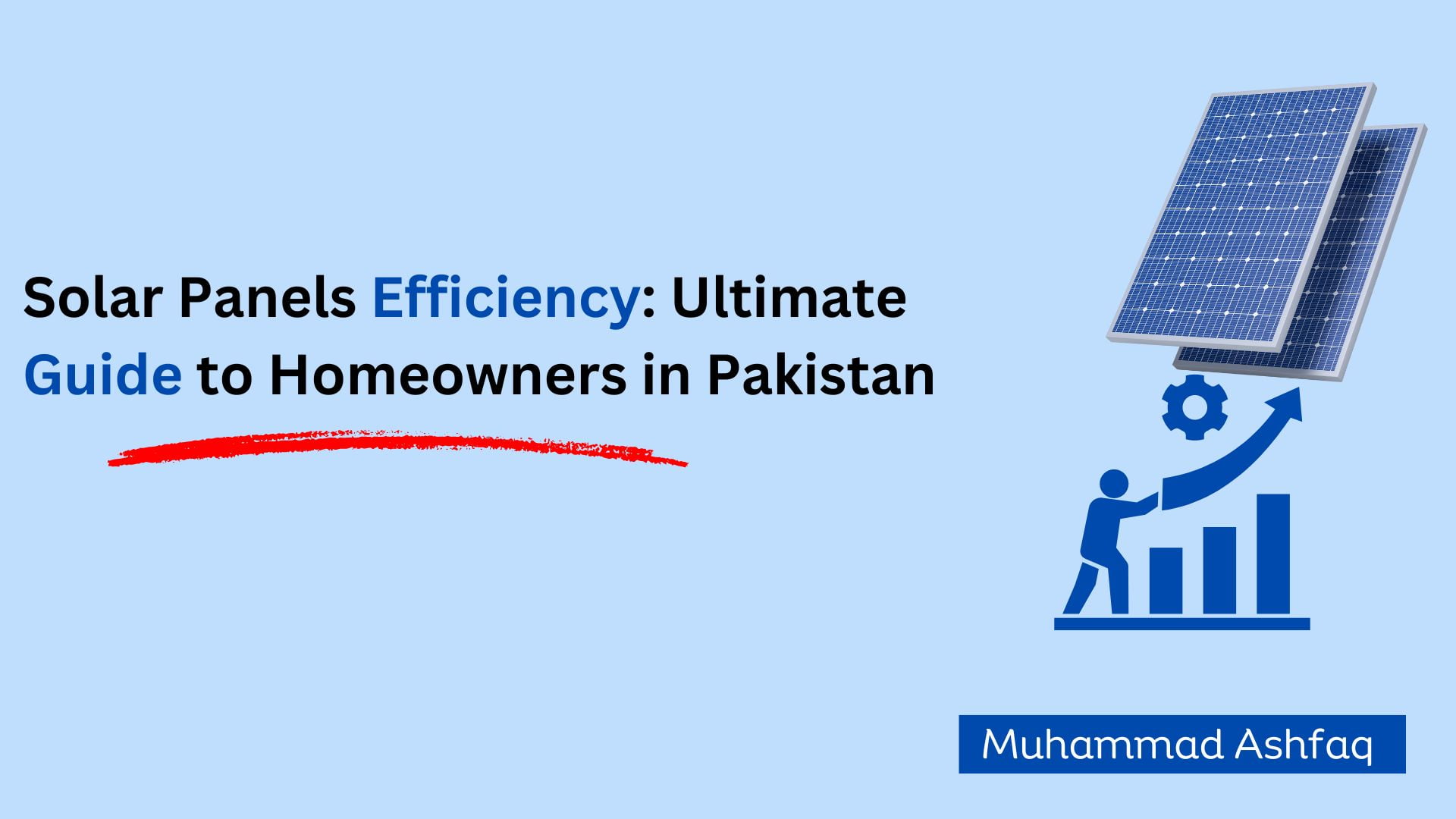Solar Panels Efficiency: Ultimate Guide to Homeowners in Pakistan
When installing solar panels on your roof, the most important factor to consider is their efficiency.
But does efficiency matter? If it matters, then how can you get the most out of it?
If you’ve been asking yourself these questions, then sit back, relax, and let me take you with me for the next 5 minutes to get the answers.
What is Meant by Solar Panel Efficiency?
When it comes to solar panels, one of the most important factors to consider is their efficiency. But what exactly does that mean?
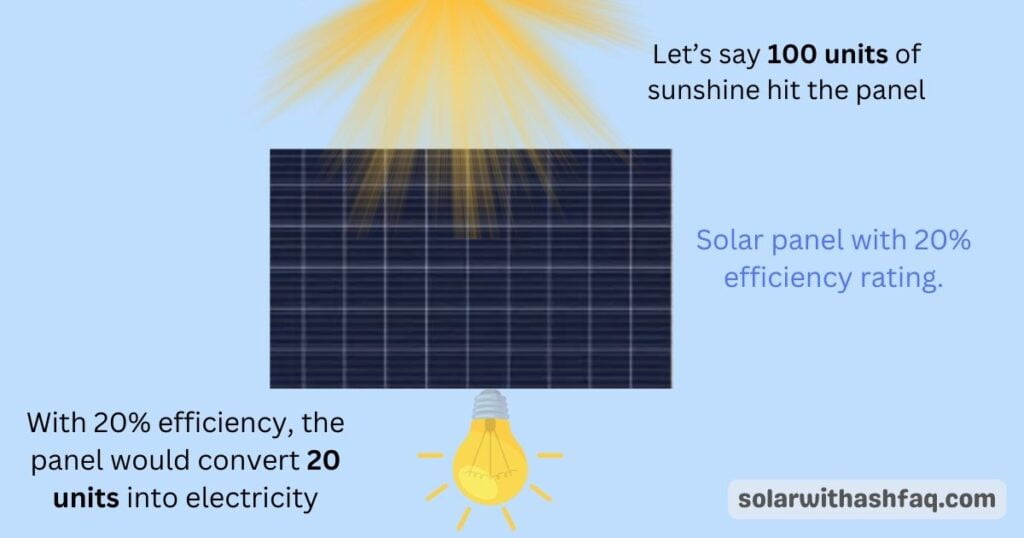
The efficiency rating you see on a solar panel is the percentage of the sun’s energy that the panel can convert to electricity under standard test conditions. Most residential solar panels today have efficiency ratings between 15-22%. The higher the rating, the more power you’ll get from the same-sized panel.
Standard Test Condition
The standard test conditions mean ideal conditions under which solar panels are tested to determine their maximum power output. These include sunlight intensity of 1,000 watts/ m2 and a cell temperature of 25°C.
Factors Affecting Solar Panel Efficiency
Solar Irradiance (W/m2)
Higher solar irradiance (the amount of solar power that reaches a specific area on Earth at a given time,) levels directly translate to greater efficiency for your solar panels.
The more solar energy that reaches your panels, the more electricity they can generate.
The average solar irradiance in Pakistan is around 4-5 kWh/m2 per day. This means that on average, each square meter in Pakistan receives approximately 4.5 to 5 kilowatt-hours (units) of solar energy per day.
Looking at the below map will give you an overall picture of solar irradiance across different regions of Pakistan.
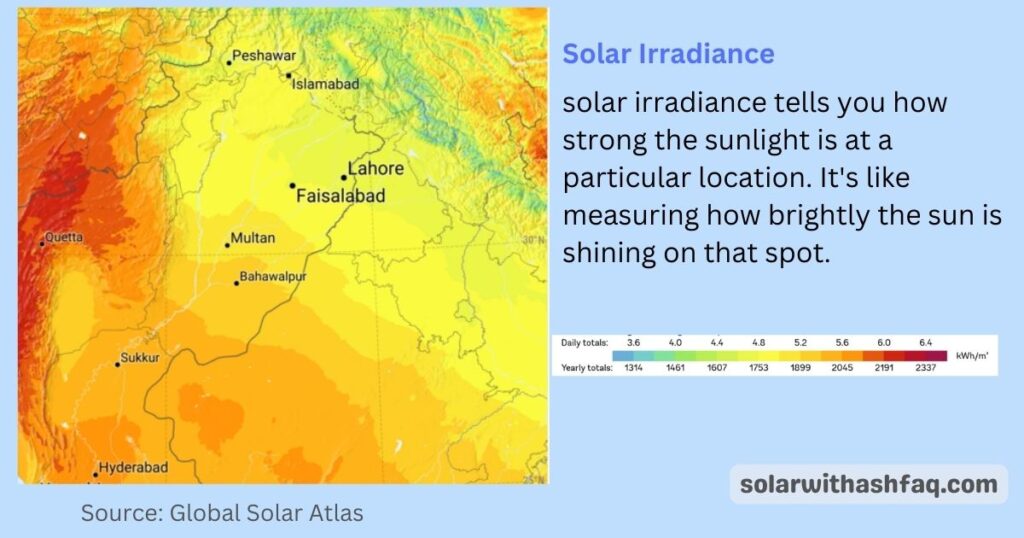
Solar panel material
One of the primary factors that contributes to the efficiency is the type of silicon used in the solar cells. Monocrystalline solar panels (mostly manufactured by Longi )made from high-purity single-crystal silicon, tend to be the most efficient, with conversion rates ranging from 15% to 22%.
On the other hand, polycrystalline solar panels, made from multiple silicon crystals, are slightly less efficient, typically ranging from 15% to 17% conversion rates. However, they are often more affordable, making them a good option for budget-conscious homeowners.
Additionally, advancements in solar cell technology, such as the Passivated Emitter and Rear Cell (PERC) and Tunnel Oxide Passivated Contact (TOPCon) techniques, have further improved the efficiency of both monocrystalline and polycrystalline solar panels.
These innovative approaches help to minimize energy losses (electron recombination) and maximize the panel’s ability to convert sunlight into usable electricity.
When selecting solar panels for your home, it’s essential to weigh the trade-offs between efficiency, cost, and your specific energy needs.
Temperature
Most people would assume the hotter the sun, the greater the solar panel’s efficiency. Surprisingly, That’s not true. The semiconductors in solar panels are sensitive to high temperatures (technically known as temperature coefficient).
According to manufacturing standards, 25°C or 77°F is the optimum (best) temperature for photovoltaic solar panels. When solar panels get too hot, their efficiency starts to decrease.
For every 1°C increase in temperature above 25°C, a solar panel’s power output can drop by 0.5%. This means that on a blazing 40°C day, a solar panel could be operating at 7.5% less efficiency compared to a mild 25°C day.
And on cloudy days, the output also reduces due to a decrease in direct sunlight.
How to Maximize Solar Panel Efficiency
Getting the most out of your solar panel investment is all about increasing efficiency.
As a homeowner in Pakistan, you want to ensure your solar system is running at peak performance to see the biggest savings on your electric bills.
Here are some tips to help you get the most from your solar panels:
Get a professional installation
If I share my personal experience (after inspecting dozens of solar setups in the IESCO region), the quality of installation is the most overlooked part in Pakistan.
I know firsthand how people spend thousands on equipment but start to save most pennies by hiring local, untrained electricians.
That’s why I always recommend spending a bit more to get a qualified installer. The manufacturers also back this up – they say proper electrical wiring is crucial for optimizing your system’s performance.
The professional touch will help your solar array operate at maximum efficiency from day one.
Clean your solar panels regularly
Over time, dust, dirt, and debris (coming from wheat thresher machines) can accumulate on your solar panels, blocking sunlight and reducing power output.
Make it a habit to gently clean your panels every few months using a soft brush or cloth.
Experts at the National Renewable Energy Laboratory (NREL) say this simple maintenance task can boost your system’s efficiency by up to 5-20%.
Avoid installing solar panels in shaded areas
Solar panels need direct sunlight to function at their best. If your roof has a lot of shade from trees, commercial buildings, or other obstructions (often neighbor multiple stories), your panels won’t be able to soak up as much of the sun’s energy.
Carefully evaluate your roof’s sun exposure before installation to maximize efficiency.
Match system size to your needs
It’s important to choose a solar panel system that’s properly sized for your home’s energy usage.
An oversized system will be less efficient in a way that if your panel’s output is larger than the inverter then the inverter will clip the extra produced energy—known as output clipping.
Likewise, an undersized one won’t provide enough power to meet your needs and will result in unnecessary trippings.
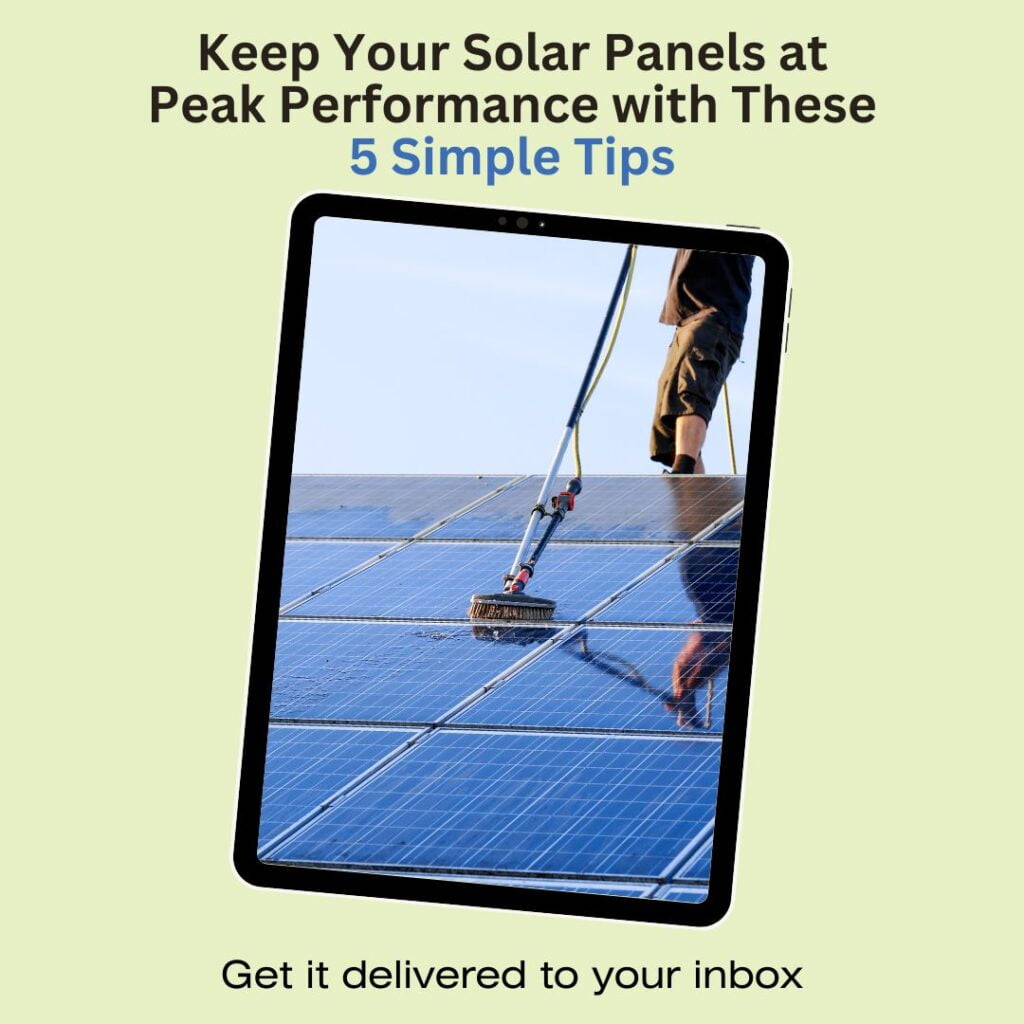
Get Your Copy
Do Solar Panels Lose Efficiency With Time?
You may wonder if solar panels lose efficiency over time. Well, it does.
According to the National Renewable Energy Laboratory (NREL), solar panels and their output degrade at a rate of about 0.5% per year. This means that a 20-year-old panel will produce approximately 90% of the electricity it produced in its first year of life.
While there is a slight decline in efficiency, modern solar panels are designed to maintain their performance for many years.
Do Solar Panels Work in Cold Weather?
A common misconception about solar panels is that they only work well in hot and sunny weather. But the truth is that they can perform quite well in cold climates.
Keep in mind that solar panels don’t need heat to generate electricity—they just need direct sunlight.
So while it’s true that you may see a slight dip in solar production during the winter months (November-February) when daylight hours are shorter.
Pakistan’s climatic conditions mean that you’ll likely see peak solar production during the spring (March-April) and fall (September-October) when temperatures are more moderate.
Do Solar Panels Work in the Rain?
Here’s a quick overview of how solar panels handle rainy weather:
- While rain reduces the amount of direct sunlight hitting the panels, diffused light (reflected from nearby places) from an overcast sky can still generate a significant amount of electricity. That means roughly solar panels will produce 20-30% of their capacity.
- In some cases, light rain can help clean the panels and improve their efficiency by washing away any dirt or dust buildup.
- Heavy rainstorms (in areas like Azad Kashmir, KPK, and Northern Punjab) may temporarily reduce output drastically, but the panels will quickly regain full productivity once the rain clears.
The Most Efficient Solar Panels of 2024 in Pakistan
When you go to the market, there are plenty of options, making it difficult to decide which solar panel to choose.
That’s why I’ve done the research and looked at the latest solar panel technology and identified the top performers for 2024. These panels not only offer impressive energy output but they’re also built to withstand the unique climate conditions here in Pakistan.
The Future of Solar Panel Efficiency
Well, If you are interested in solar energy, I’ve got some exciting news for you.
The future of solar panel efficiency is looking bright, thanks to some cutting-edge developments in solar cell technologies discussed below.
Perovskite solar cells
One of the most promising advancements is the rise of perovskite solar cells. These newer materials offer the potential for higher efficiency and lower manufacturing costs compared to traditional silicon cells.
Researchers at the KAUST Photovoltaics Laboratory, for example, have produced a perovskite/silicon solar cell with a power conversion efficiency of 33.2%.
Solar tracking systems
Another way of increasing the efficiency of existing solar panels is the use of solar tracking systems. They are becoming more common, and for good reason.
These systems orient the panels to follow the sun’s movement throughout the day, which can increase energy output by 10-25% compared to fixed-tilt systems. This movement is controlled by artificial intelligence modules without any human intervention.
Wrapping Up
To get the most out of your solar panels, always look for efficient solar panels and have them installed by professional vendors.
Once installed on your roof, you can further enhance its output by routine cleaning, taking care of future shading, and proper monitoring in different climatic conditions.
Frequently Asked Questions

Content Writer | Assistant Manager (Electrical) at IESCO
As a passionate content writer, I’m on a mission to make solar hassle-free for you through my expert guides and easy-to-digest content.
